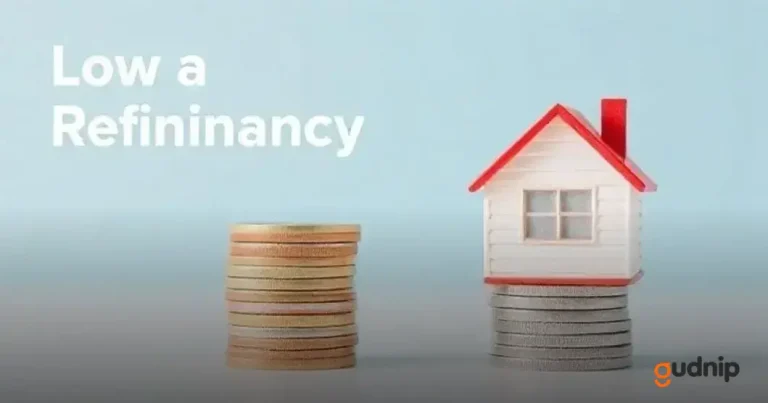Loan Refinancing Strategies to Save Money can be a game changer for anyone looking to cut costs and take control of their finances. Refinancing gives you the chance to lower interest rates, reduce monthly payments, and even pay off debt faster — all depending on how you approach it.
With so many options available, the key is knowing which strategy fits your goals best. Whether you’re hoping to free up some cash each month or shorten your loan term, a smart refinancing plan can help you make your money work harder for you.
If you’re ready to find practical ways to save and get more out of your current loan, keep reading — these insights might be exactly what you need to make your next financial move count.
Understanding Loan Refinancing
Understanding loan refinancing means grasping how replacing your current loan with a new one can help you save money. When you refinance, you might secure a better interest rate or adjust the terms of your loan. This process can lead to lower monthly payments, freeing up cash for other needs.
Many borrowers choose to refinance to take advantage of falling interest rates. Even a small difference in rates can lead to significant savings over the loan’s life. It’s not just about lowering payments; it might also mean paying off your home faster.
However, it’s important to weigh the costs of refinancing against the potential savings. You may pay closing costs that can offset your savings. Therefore, understanding the full picture of refinancing can lead you to make smart decisions for your financial future.
Benefits of Refinancing Your Loan
The benefits of refinancing your loan are numerous and can greatly impact your financial health. One main advantage is the potential for lower interest rates. When you secure a better rate, it can reduce your monthly payments. This could mean more money in your pocket each month for other expenses.
Another benefit is the ability to change your loan term. You might refinance to extend or shorten your loan period. If you choose a shorter term, you could build equity faster and pay less in interest overall. On the other hand, a longer term can lower your monthly payments, making it easier to manage your budget.
Lastly, refinancing can help streamline your finances. By consolidating multiple loans into one, you simplify your monthly payments and reduce stress. This can lead to better financial management, helping you save more effectively in the long run.
When to Refinance Your Loan
Knowing when to refinance your loan is crucial for making smart financial choices. A key moment is when interest rates drop significantly. If your current rate is higher than the market rates, refinancing could save you money. Even a small difference in rates can lead to big savings over time, making this an opportune time to act.
Another sign it might be time to refinance is when your credit score improves. If you have worked hard to raise your score, you may qualify for better loan terms. A higher credit score often leads to lower interest rates, which can reduce your monthly payments.
Finally, consider refinancing if you want to change your loan terms. If your financial situation has changed, you might prefer shorter or longer terms. For example, if you want to pay off debt faster, a shorter term could help you save on interest. Evaluating your needs can help you decide the best time to refinance.
How to Choose the Right Lender

Choosing the right lender is vital for refinancing your loan successfully. Start by comparing different lenders and their offerings. Look for lenders that have good reputations and positive reviews from past customers. Reading testimonials can help you find trustworthy lenders who will support you throughout the refinancing process.
Next, examine the interest rates and fees associated with each lender. Some may offer lower rates but charge high fees, while others may have slightly higher rates with fewer costs. Be sure to calculate the overall cost of refinancing to determine which lender truly offers the best deal for your situation.
Finally, consider the customer service provided by each lender. Being able to easily communicate and ask questions is important, especially if you need help understanding the process. Choose a lender who is responsive and willing to guide you through the refinancing journey, making it a smoother experience.
Common Mistakes to Avoid in Refinancing
When refinancing, one common mistake is not shopping around for the best rates. Many borrowers go with their current lender without comparing offers from multiple sources. It’s crucial to check different lenders and see who can provide the best deal. A small difference in interest rates can lead to significant savings over time.
Another mistake is underestimating the costs involved in refinancing. Borrowers might focus only on monthly payments and overlook closing costs and fees. It’s important to calculate the total expenses associated with refinancing to make sure it fits your budget. Understanding these costs ensures you are making a wise financial decision.
Lastly, many people fail to think about their long-term goals. Refinancing a loan should align with your financial plans. For instance, if you plan to move soon, a lengthy loan term might not be beneficial. Consider your future before refinancing to avoid making choices that could cost you money in the long run.
Exploring Different Refinancing Options
Exploring different refinancing options can help you find the best fit for your financial situation. One popular option is a rate-and-term refinance. This allows you to change the interest rate or the term of your loan without taking out extra cash. It’s ideal for borrowers who want to lower payments or pay off loans faster.
Another option is cash-out refinancing. This lets you take out a new, larger loan and get cash back for other needs, like home repairs or paying off debt. While this can provide immediate funds, it’s essential to have a clear plan for how to use the extra money wisely to avoid falling into more debt.
Lastly, there are government-backed refinancing loans, like FHA and VA loans. These often come with lower interest rates and may require minimal down payments. If you qualify for these programs, they can be an excellent way to refinance your loan while also staying within your budget.
Calculating Potential Savings with Refinancing
Calculating potential savings with refinancing is an important step to ensure that you’re making a wise decision. Start by comparing your current loan’s interest rate with the new rate you can get. Use this difference to calculate how much less you’ll pay each month. Even a small percent decrease can lead to significant savings over time.
Next, consider the loan term. If you switch from a 30-year to a 15-year loan, your monthly payments may rise, but you’ll pay off your home much faster. Calculate both scenarios to see which option saves you more in interest payments overall. This will give you a better picture of your savings.
Lastly, remember to factor in any fees associated with refinancing, like closing costs. These costs can affect your overall savings, so it’s essential to include them in your calculations. It helps to create a spreadsheet to track all the numbers. This way, you can see clearly if refinancing is truly beneficial for you.





